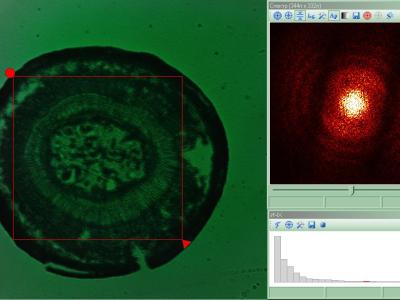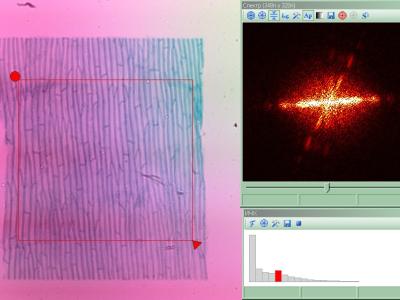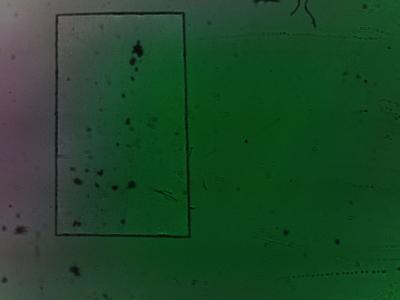SEM measurements of teeth of Elasmobranchs (Chondrichtyes, Elasmobranchii) [preliminary non-processed raw data]

- Citation Author(s):
-
Paul AlexandrovMargaret Gradova (Semenov Institute of Chemical Physics)Oleg Gradov (Semenov Institute of Chemical Physics)
- Submitted by:
- Oleg Gradov
- Last updated:
- DOI:
- 10.21227/e6sz-d392
 267 views
267 views
- Categories:
Abstract
The teeth of elasmobranchs are connected to a common fibrous band which moves forward continuously, carrying all the teeth with it.
Literature:
- Boyne, P. J. (1970). Study of the chronologic development and eruption of teeth in elasmobranchs. Journal of dental research,49(3), 556-560.
- Leidner, A., & Thies, D. (1999). Placoid scales and oral teeth of Late Jurassic elasmobranchs from Europe. Mesozoic fishes, 2, 29-40.
- Bendix-Almgreen, S. E. (1983). Carcharodon megalodon from the Upper Miocene of Denmark, with comments on elasmobranch tooth enameloid: coronoïn. Bulletin of the Geological Society of Denmark, 32, 1-32.
- James, W. W. (1953, August). The succession of teeth in elasmobranchs. In Proceedings of the Zoological Society of London (Vol. 123, No. 2, pp. 419-474). Oxford, UK: Blackwell Publishing Ltd.
- Mertinene, R. A. (1982). The histology of the teeth of elasmobranchs. Paleontol J, 16, 74-82.
- Popov, E. V., Seltzer, V. B., & Volkov, A. V. (2004). On records of elasmobranchs teeth (Chondrichthyes: Elasmobranchii) from the lower Callovian of Saratov, Russia. Transactions of the Scientific Research Geological Institute of the NG Chernyshevskii Saratov State University, 16, 133-154.
- Itoigawa, J., & Nishimoto, H. (1974). Fossil elasmobranchs (shark teeth) from the Miocene series of Mizunami. Bulletin of the Mizunami Fossil Museum, 1, 243-262.
- Frazzetta, T. H. (1988). The mechanics of cutting and the form of shark teeth (Chondrichthyes, Elasmobranchii). Zoomorphology,108(2), 93-107.
- Shimada, K. (2002). Teeth of embryos in lamniform sharks (Chondrichthyes: Elasmobranchii). Environmental Biology of Fishes, 63(3), 309-319.
- Marsili, S. (2007). Revision of the teeth of the genus Carcharhinus (Elasmobranchii; Carcharhinidae) from the Pliocene of Tuscany, Italy. Rivista Italiana di Paleontologia e Stratigrafia (Research In Paleontology and Stratigraphy), 113(1), 79-95.
- Delsate, D. (1995). Teeth of the fossil shark Annea Thies 1983 (Elasmobranchii, Neoselachii) from the Toarcian of Belgium.Belgian Geological Survey Professional Paper, 278, 45-64.
- Shellis, R. P., & Berkovitz, B. K. B. (1980). Dentine structure in the rostral teeth of the sawfish Pristis (Elasmobranchii). Archives of oral biology, 25(5), 339-343.
- Welten, M., Smith, M. M., Underwood, C., & Johanson, Z. (2015). Evolutionary origins and development of saw-teeth on the sawfish and sawshark rostrum (Elasmobranchii; Chondrichthyes). Royal Society open science, 2(9), 150189.
- Tomes, C. S. (1876). X. On the development of the teeth of fishes (Elasmobranchii and Teleostei). Philosophical Transactions of the Royal Society of London, (166), 257-267.
- Gajić, A., & Dando, M. (2012). Teeth and jaws of lamnoid sharks (Chondrichthyes: Elasmobranchii: Lamniformes) of the Adriatic sea. The 16th Symposum of Biology Students in Europe, 27, 22-23.
- Andreev, P. L. A. M. E. N., & Motchurova-Dekova, N. E. D. A. (2010). Checklist of the fossil shark and bony fish teeth (Elasmobranchii and Actinopterygii) housed at the National Museum of Natural History, Sofia. Bulletin of the Natural History Museum, 3, 115-129.
- Moyer, J. K., Hamilton, N. D., Seeley, R. H., Riccio, M. L., & Bemis, W. E. (2015). Identification of shark teeth (Elasmobranchii: Lamnidae) from a historic fishing station on Smuttynose Island, Maine, using computed tomography imaging. Northeastern naturalist, 22(3), 585-598.
- Hampe, O. (1991). Histological investigations on the fossil teeth of the shark-order Xenacanthida (Chondrichthyes: Elasmobranchii) as revealed by fluorescence microscopy. Leica Sci Tech Inform,10(1), 17-27.
- Kuga, N., & Usui, A. (1982). Fossil teeth of Elasmobranchii associated with manganese nodules (abs.): Proceedings Annual Meeting. Geological Society of Japan.
- Ginter, M., Hampe, O., Duffin, C., & Schultze, H. P. (2010). Paleozoic Elasmobranchii: Teeth: Handbook of Paleoichthyology, vol. 3.
- Yabe, H., & Goto, M. (1996). Fossil shark teeth of the genus Carcharocles (Elasmobranchii: Lamniformes) from the Middle Miocene at Kuzubukuro, Higashi-matsuyama City, Saitama Prefecture, central Japan. Earth Science (Chikyu Kagaku), 50(6), 432-440.
- Pigowske, A. (2009). Stable Isotopic Composition of Modern Selachian (Condrichthyes: Elasmobranchii) Teeth as a Proxy for Trophic Levels (Doctoral dissertation).
- Suzuki, H. (2007). First description of fossil shark teeth of the genus Centrophorus (Elasmobranchii: Squaliformes) from the Miocene of Japan. Jour. Geol. Soc. Japan., 113, 23-26.
- Verschueren, S. (2012). Field Chondrichthyes Mesozoic and Cenozoic Elasmobranchii: Teeth, Handbook of Paleoichthyology Volume 3E. Afzettingen, 33(3), 59-60.
- Gonzalez, M. M., & Amenomori, S. N. (2003). Osteology and utilization of white shark teeth, Carcharodon carcharias (Linnaeus, 1758)(Elasmobranchii, Lamnidae) at shell mounds of São Paulo.Revista do Museu de Arqueologia e Etnologia, (13), 25-37.
Instructions:
See our next articles.















